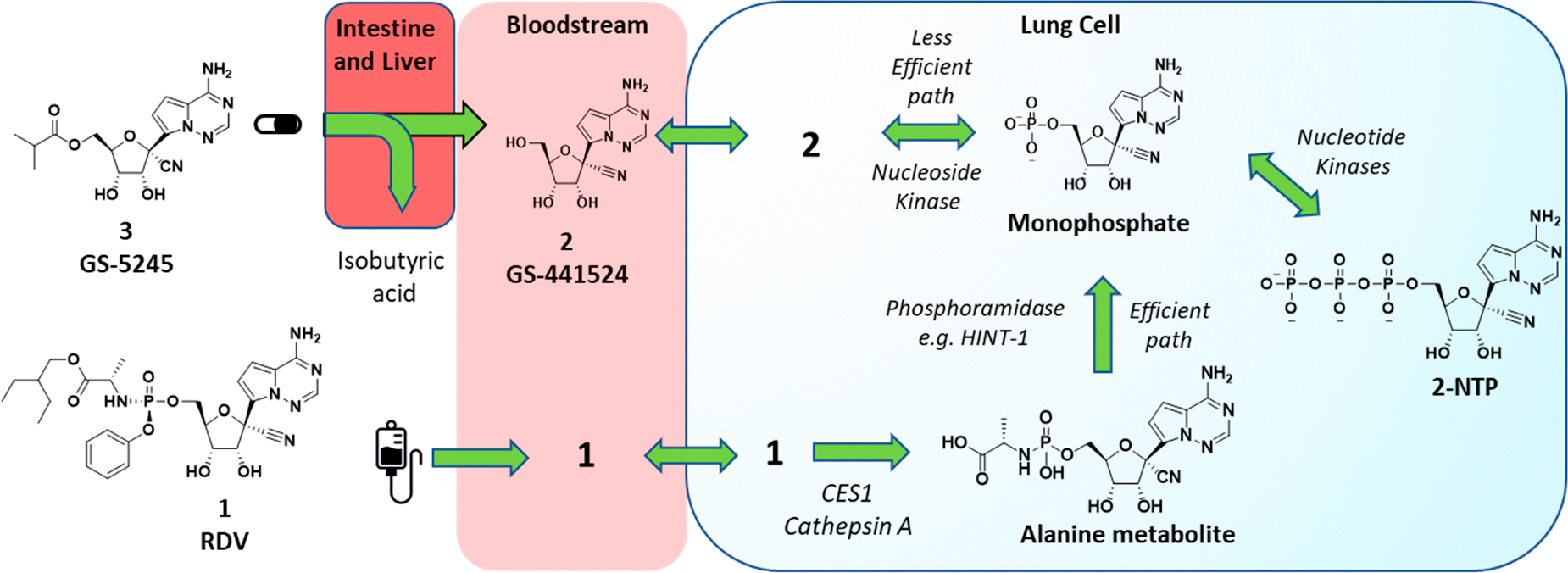Figure 1.

Metabolic activation pathways of prodrug 3 and phosphoramidate 1 to the common active 2-NTP metabolite in lungs. Ester prodrug 3 administered orally is metabolized presystemically in the intestine and liver to parent nucleoside 2 which then distributes into cells, including lung cells, where it is metabolized by a nucleoside kinase to the monophosphate. The monophosphate is then metabolized to the active metabolite, 2-NTP, by the action of nucleotide kinases. These steps are reversible and allow the phosphorylated metabolites generated inside all cells to also be broken down to parent nucleoside 2 and released back into systemic circulation. Phosphoramidate 1, following iv administration, rapidly distributes into many cell types, including lung cells, where it is metabolized irreversibly by the action of hydrolases (CES1, Cathepsin A) to the alanine metabolite and then to the same monophosphate by the action of phosphoramidases, e.g., HINT-1. The metabolism of 1 to the monophosphate inside cells is efficient and is the major pathway for generation of 2-NTP following administration of 1.
